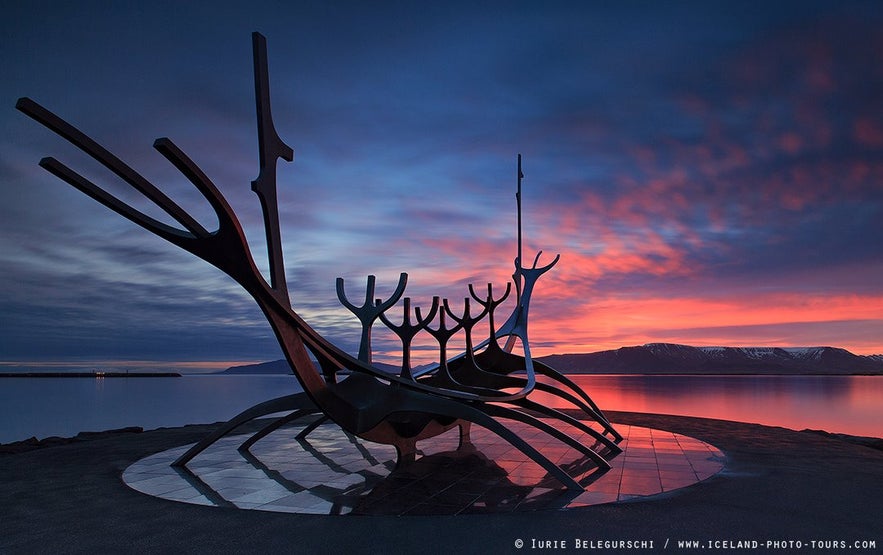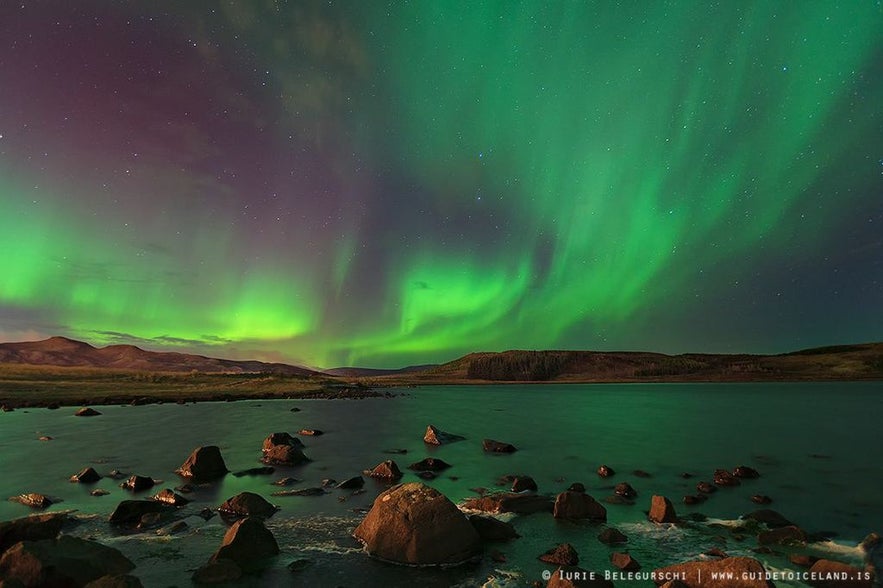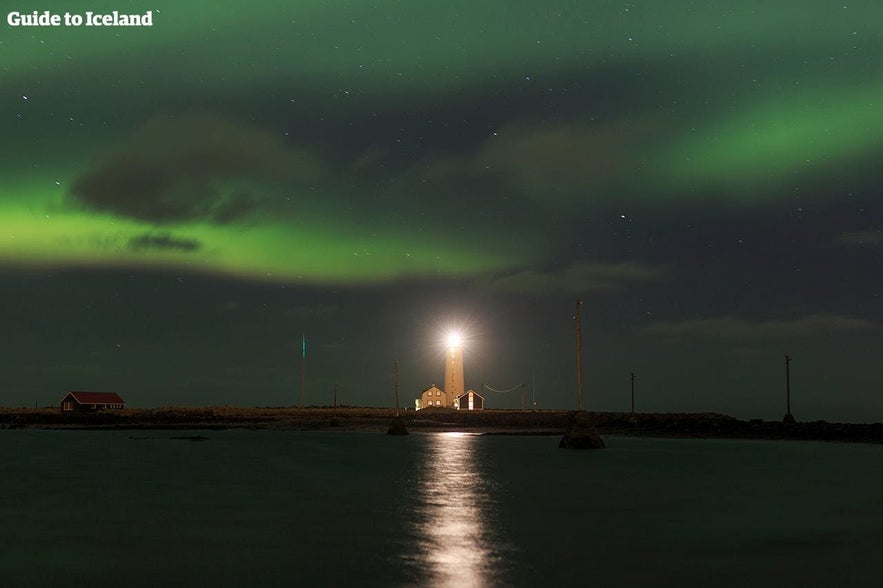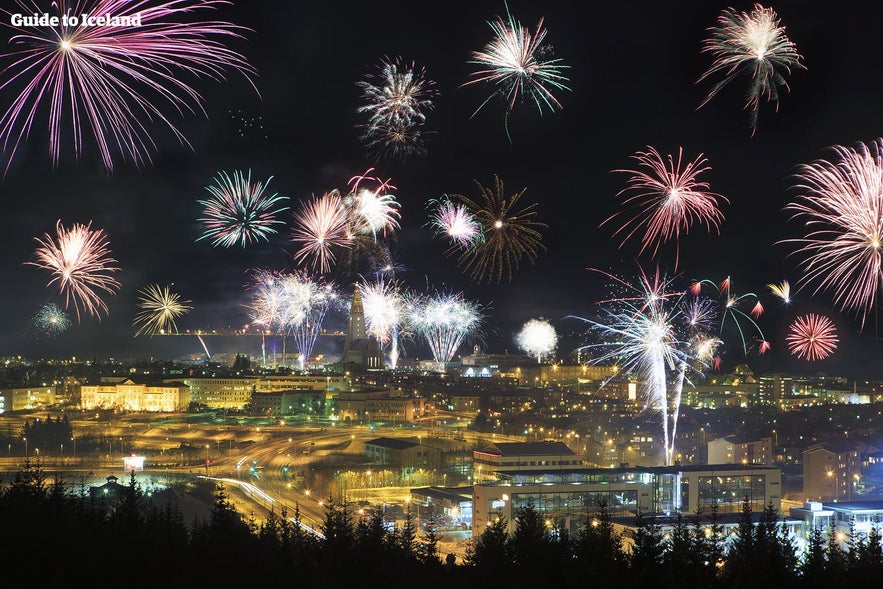
Best Annual Events in Iceland

- Þorrablót
- The Food and Fun Festival
- The Reykjavik Art Festival
- Independence Day in Iceland
- Summer Solstice in Iceland
- The Folk Festival in North Iceland
- Music festivals in Iceland
- Reykjavík Pride
- Culture Night in Iceland
- The Northern Lights in Iceland
- The Reykjavík Literary Festival
- The Reykjavík International Film Festival
- Iceland Airwaves
- Christmas in Iceland
- New Year's Eve in Iceland
What are the best annual events in Iceland? When do the best annual events in Iceland occur? Here's a list of our top picks, listed from January to December, to hopefully give you an idea of what will be going on during your stay.
- Discover the fascinating History of Iceland
- Find out everything you need to know about National Holidays in Iceland
Þorrablót
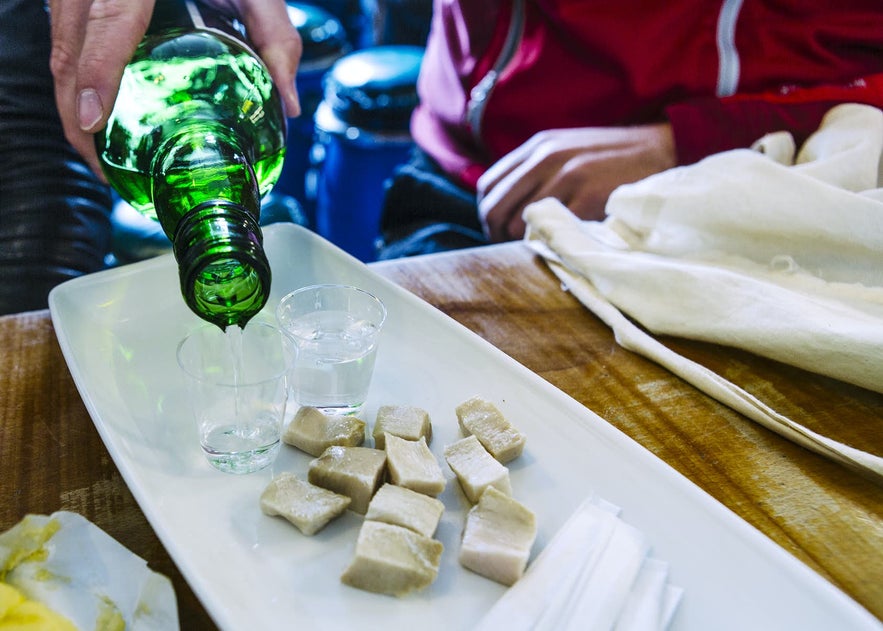
In either January or February, Icelanders celebrate the 'feast of Þorri,' which is a midwinter festival named after a month in the Old Icelandic Calendar. The tradition is to gather somewhere cozy with friends and family to eat some truly revolting national delicacies.
From manuscripts of the Middle Ages, we know that this festival has a long history, but it is unclear exactly how the feast of 'blót' was celebrated back then. Even so, records point to a similarly styled party with a lot of food and drink enjoyed.
- See also: Delicious Icelandic Recipes
- Check out this Food Tour around Reykjavík
In these historic times, Icelanders used to salt, smoke, bury and/or ferment their food for storage purposes, which is why such 'delicacies' are eaten during Þorrablót today. Favorites and stables include sour ram testicles, boiled sheep-heads, and of course, fermented shark.

To be able to eat these traditional foods is also a sign of strength in Icelandic culture. Even the hardiest, however, will want to wash down a few of the dishes with a shot of Brennivín (Icelandic schnapps) to clear the palette.
- See also: The Giants of Iceland | The Story of Iceland's Strongmen
- See also: The World's Most Disgusting Icelandic Food
The Food and Fun Festival
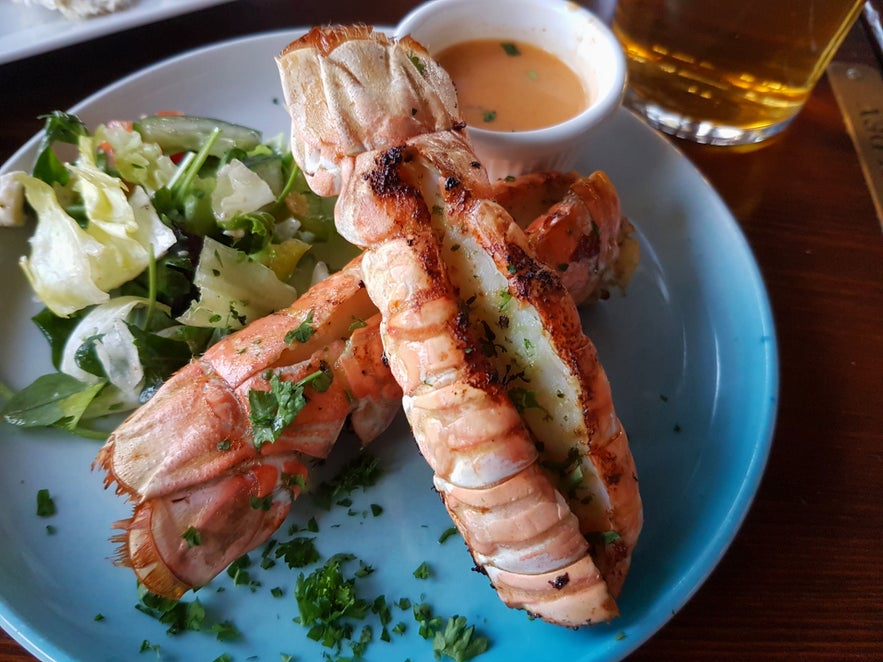
In February or March, there is an annual event in which you can actually enjoy your meals: the Food and Fun Festival. Many of the world's greatest chefs come to Iceland to collaborate with Reykjavík's finest restaurants―and together create ingenious dishes to the delight of the taste-buds of those attending.
Each chef is assigned to one of the participating establishments, where they prepare a menu that is crafted from Icelandic ingredients and products, and inspired by their own international experience.
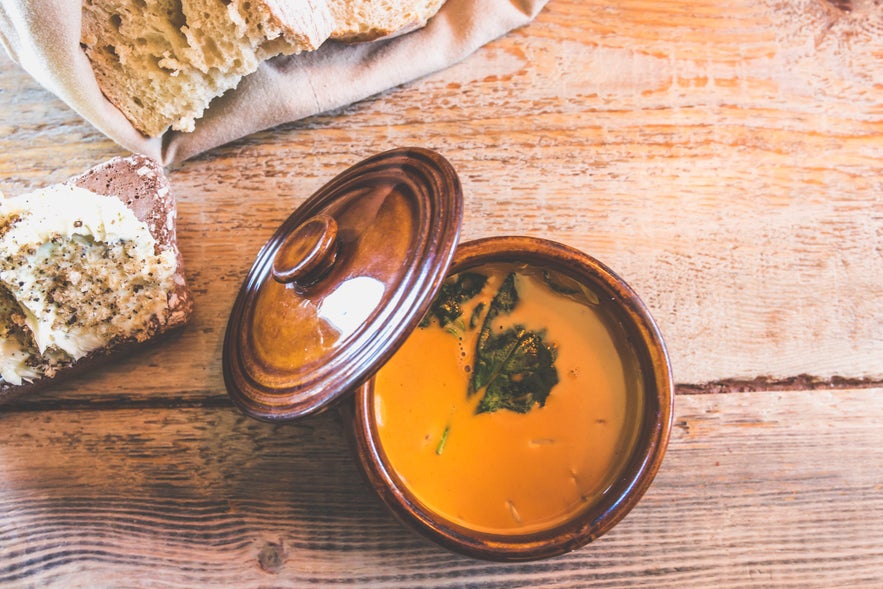
There is also a competition on the last day of the festival, where the chefs compete with three courses. Once the results come in, a great party ensues across the city.
If you enjoy fine dining and experimenting with flavour, the Food and Fun Festival in Reykjavík is an event not to be missed.
- See also: The Best Restaurants in Reykjavík
- See also: Top 21 Vegan & Vegetarian Restaurants in Reykjavik
The Reykjavik Art Festival

From May 18th to June 3rd, Iceland's capital hosts the Reykjavik Art Festival. First held in 1970, it celebrates music, visual arts, dance, literature, design and more, with a special focus on innovation.
- See also: Top 10 Festivals in Iceland
- See also: Top 10 Things to Do in Reykjavík
Throughout the years, the festival has featured some of the best-known artists in the world. Among them are Vladimir Ashkenazy (who’s also the festival’s honorary president), Led Zeppelin, Nina Simone, Andy Warhol, Jaqueline du Pré, Bob Dylan, Goran Bregovic, Ingmar Bergman, Benny Goodman, Mstislav Rostropovich, Luciano Pavarotti, Human League, Doris Lessing, The Shadows, Leonard Cohen, Pulp, Madness, The Stranglers, Björk, Sigur Rós, David Bowie and many more.
Those with an appreciation of art―in basically any form―will find a wealth of cultural activities to enjoy throughout this festival.
- See also: Art Galleries in Reykjavík and Graffiti and Street Art in Reykjavík
- Gain access to the capital's museums with a Reykjavík City Card
Independence Day in Iceland
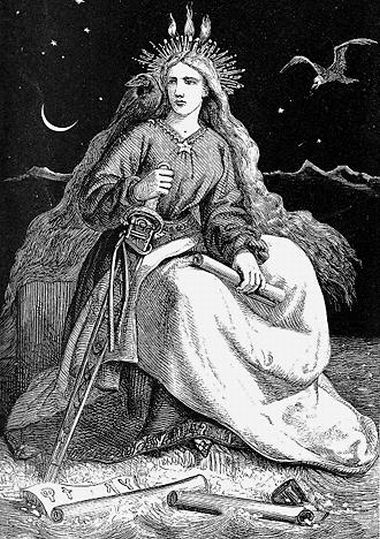
Icelanders took a referendum on May 20th to 23th in 1944 and voted overwhelmingly to become an independent, sovereign state. Independence day, however, is celebrated on the birthday of the man who led the movement, Jón Sigurðsson, on June 17th.
- See also: Where Did Icelanders Come From?
The celebration traditionally takes the form of parades throughout the country, with horses leading it and a big brass band. Several speeches are held out in open spaces, and most events have one done by Fjallkonan, the mythical personification of Iceland, which translates to the Woman of the Mountain.
Festivities throughout the country promise music, food and all-round-celebration, and when night comes around, you can expect fireworks and a lot of partying.
- See also: The History of Iceland and Folklore in Iceland
Summer Solstice in Iceland
On June 21st, the summer solstice occurs, where Icelanders and visitors alike gather to celebrate the year's longest day, as in the pagan tradition. In Iceland, this is particularly special due to the fact that the sun never sets.
- See also: Time in Iceland | A Land of Here and Now
The midnight sun, in fact, lasts for the week before and after the summer solstice, and the sky is bright throughout the night from May to August.
To celebrate this time, bonfires are lit, there are interesting walking tours, and those who still follow the Old Norse Faith (Ásatrúarfélagið) have one of their main feasts at Þingvellir National Park.
The Secret Solstice music festival is held over a long weekend during this time, an open-air camping festival in Laugardalur Park in the heart of Reykjavík, which has boasted such headliners as Radiohead, Foo Fighters, Massive Attack, Chaka Khan, and Die Antwort.
One of the most popular events outside of this is the Viking Festival in Hafnarfjörður, which features Viking-style costumes, music, jewellery, crafts, and sword fighting displays by professionals Vikings. When visiting, you should also grab a bite at the Viking restaurant Fjörukráin.
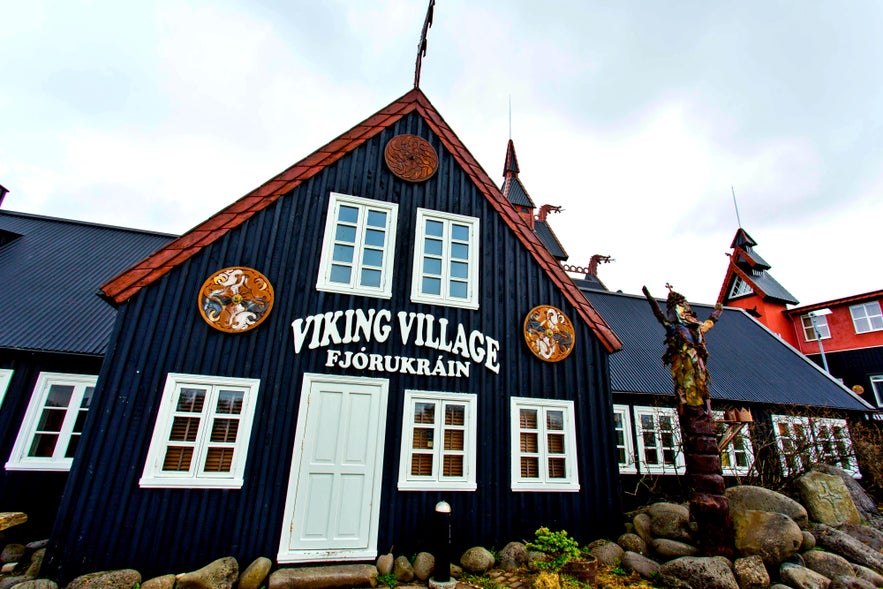
To celebrate in the true style of the Old Norse, there is a tradition of rolling naked in the morning dew on the summer solstice. To make this experience completely authentic, however, you'll have to do it on June 24th, as early Icelanders were three days off.
- See also: The Midnight Sun in Iceland
- See also: Getting Naked in Iceland
The Folk Festival in North Iceland
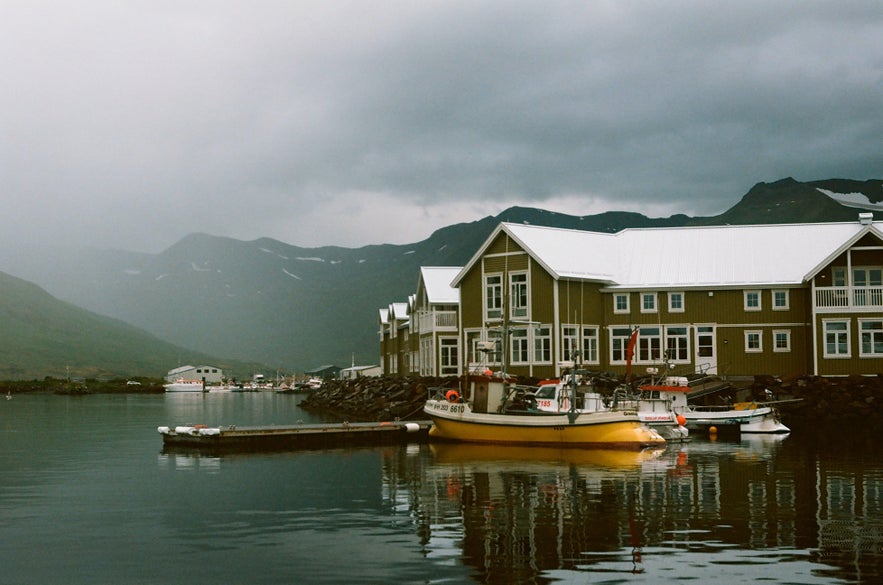 Photo by Alena Timofeeva
Photo by Alena Timofeeva
In early July, the fishing town of Siglufjörður hosts its annual Folk Festival, introducing Icelandic culture to outsiders, and foreign culture to locals. Due to Iceland's small size, it would not be unreasonable to believe Reykjavík is the only place here where culture can flourish, yet small towns such as Siglufjörður entirely disprove this notion.
This folk festival is not just a place of concerts, there are also courses and lectures going on across the town, both in the musical style as well as other traditional Icelandic art forms, such as handicrafts.
Music festivals in Iceland
There are many great outdoor and indoor music festivals in Iceland, and this article would be many times its length if it were to list all of them. One of most popular, however, is the outdoor festival Þjóðhátíð í Eyjum, held annually in the Westman Islands in the first weekend of August.
- See also: Music of Iceland
People from all over the world travel here to camp and party. The festival boasts group-singing traditions and features many local popular bands. It starts out on Thursday with the 'pick-up ball', where lovers meet, features a bonfire on Friday night, and culminates with a firework display on Saturday.
 Photo from Private 2 Hour Sightseeing Tour of Heimaey in the Westman Islands with Eldfell & Elephant Rock
Photo from Private 2 Hour Sightseeing Tour of Heimaey in the Westman Islands with Eldfell & Elephant Rock
Other notable music festivals during this weekend include Innipúkinn in Reykjavík, featuring local and foreign bands, and Neistaflug in Neskaupstaður.
Aldrei fór ég suður in Ísafjörður in April, Eistnaflug in Neskaupstadur in July, and Sónar in Reykjavík in February are all also worth coming to Iceland for.
Reykjavík Pride
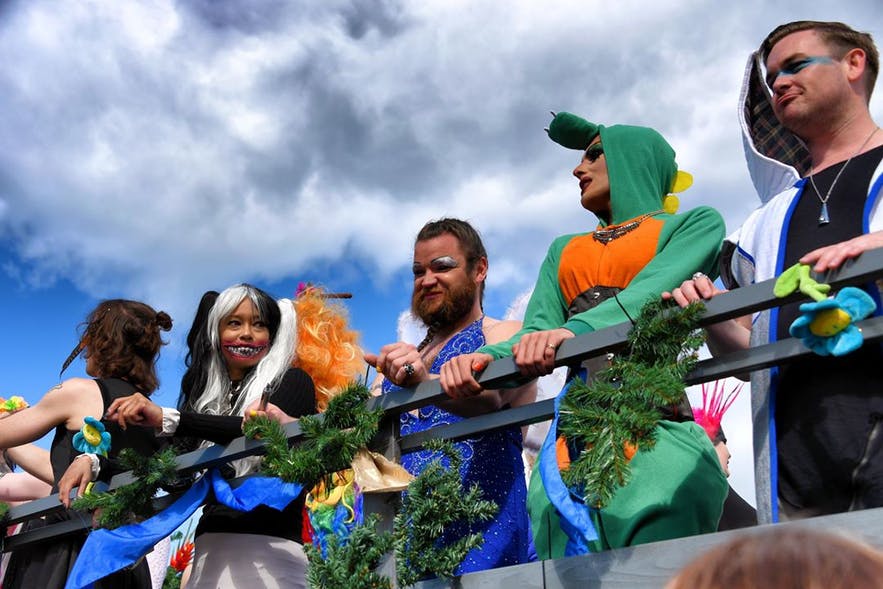 Photo from Richard Chapman
Photo from Richard Chapman
LGBTQ+ rights in Iceland have come on leaps and bounds over the past forty years, led by groups such as Samtökin ’78.
Iceland is now one of the most progressive countries in the world regarding LGBTQ+ rights. It was the first nation to elect a gay leader (with Jóhanna Sigurðardóttir becoming prime minister in 2009) and passed marriage equality unanimously in 2010. Same-sex adoption is also legal, and it is possible for trans-people to officially change the gender of all their legal documents.
These rights and queer culture are celebrated during Reykjavík Pride in mid-August. The event brings tens of thousands of people into the city center, from young children to the elderly.
As can be expected, the nights out promise to be some of the most enjoyable on the yearly calendar.
- See also: Gay Iceland | All You Need to Know
- See Blog: The Drag Scene in Iceland
Culture Night in Iceland
Menningarnótt, or Culture Night, is one of the biggest calendar events of the year and occurs in mid-August. Across the city, be it in parks, galleries, bars or the streets, cultural celebrations of all kinds are going on. Thousands of people contribute, collaborate and perform, with many more coming to watch, listen and enjoy.
If you love theatre, music, art, cabaret or any other kind of performance, this festival blends them all into one whirlwind of a day. Those travelling to Iceland in summer to make the most of the midnight sun and nature should at least reserve the evening to get their full dose of culture too.
In true Icelandic style, the night out following Culture Night is wild.
- See also: Nightlife in Reykjavik
The Northern Lights in Iceland
From September to April, when the sky is dark and clear, you have a great chance of seeing the Aurora Borealis in Iceland. This ethereal natural phenomenon is the reason why many visitors come in the first place, and, so long as you plan well and have a little bit of luck, you have a great chance of seeing the lights dance in the sky.
There are many ways in which you can admire the Northern Lights. You can, for example, head to dark parts of the city, such as at Grótta lighthouse or Laugardalur Park, and keep an eye on the sky. This, however, provides you with no mobility, so even a small cloud could spoil your viewing.
- See also: The Northern Lights
A better option is to rent a four-wheel-drive car and seek them yourself by following the cloud and aurora forecasts online. Due to the stress of driving Iceland's winter roads, however, it is often best just to book a Northern Lights tour.
There are many choices regarding how to take this excursion; those on a budget, for example, could partake in a bus tour, while those eager for a more personal, rather than more affordable, trip could look into a super jeep tour. A unique choice is to take a boat cruise out into Faxaflói bay in the hope of seeing them.
The best thing about the annual event of the Northern Lights is that you don’t need to be in any specific place to enjoy it. There are also bus and boat tours from the North, as well as in other parts of the country.
The Reykjavík Literary Festival
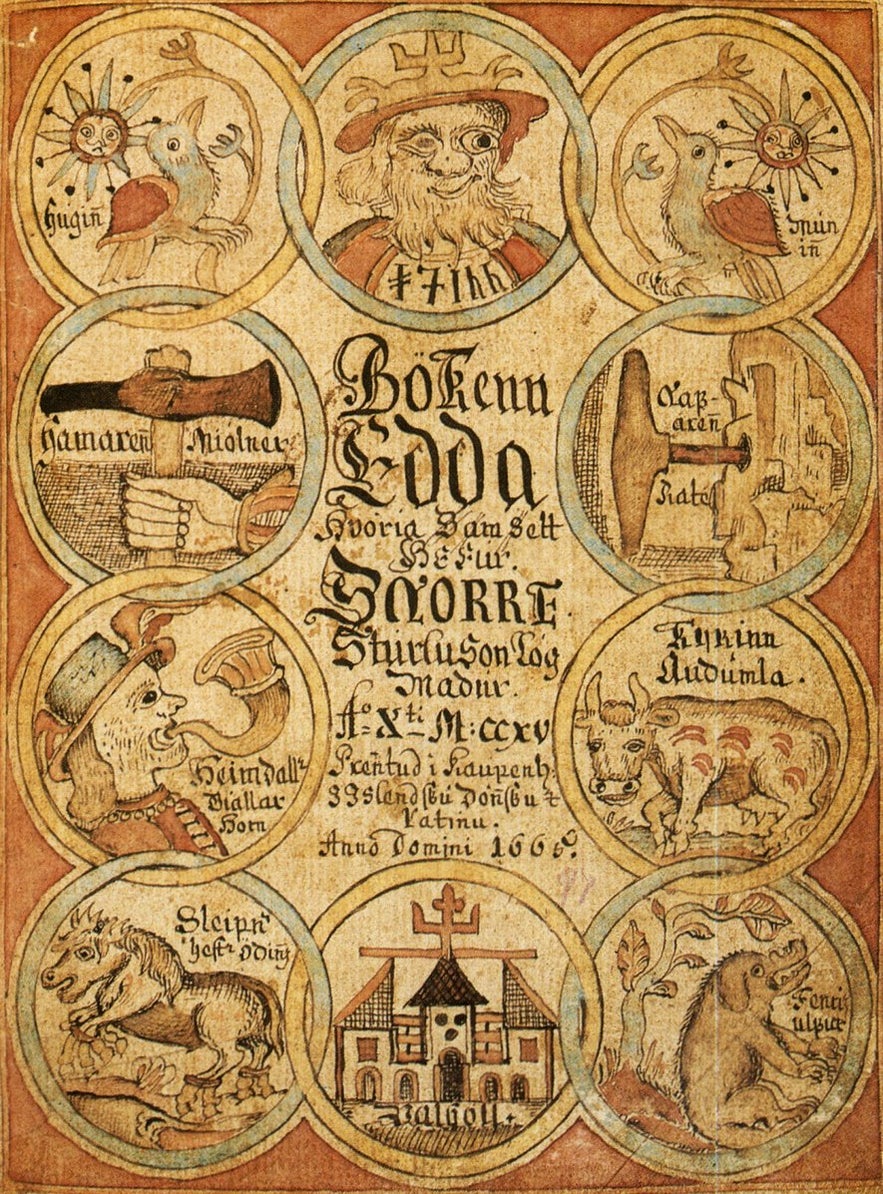 Photo from Wikimedia, Creative Commons, public domain. No edits made.
Photo from Wikimedia, Creative Commons, public domain. No edits made.
In September, Reykjavík hosts its Literary festival, featuring Icelandic and international authors. With free seminars and interviews, conducted in English and held all around the city, and many readings from notable authors, it is one of Europe's leading celebrations of the world of the written word.
Bookworms and aspiring writers will find a wealth of things to do, and perhaps meet some of their icons. Big names who have attended the festival before include Margaret Atwood, David Sedaris, Günter Grass, Hanif Kureishi and Ngũgĩ wa Thiong'o.
- See also: Icelandic Literature for Beginners
The Reykjavík International Film Festival
Reykjavík International Film Festival, or RIFF, takes place every year in late September for eleven days, having established itself firmly on the international map. It features a wide range of fiction and non-fiction films from over 40 countries, all of which push the envelope in some way, drawing refreshing attention to independent, rather than blockbuster, filmmaking.
There are screenings across town, interviews and seminars from those in the industry, and opportunities for aspiring filmmakers to make connections. Not only that, but the festival offers concerts, exhibitions and shows to encourage a celebratory atmosphere.
- See also: Movie Locations in Iceland
- See also: The Story of Icelandic Cinema
Iceland Airwaves
In October, Iceland's largest showcase of musical talent occurs; the Iceland Airwaves festival. Pretty much everyone writing about music has lauded it, with the Rolling Stone magazine calling it, 'the hippest long weekend on the annual music-festival calendar'. It is, therefore, drawing international attention more and more every year.
Events are occurring 'On Venue' and 'Off Venue', the former being exclusive to Airwaves ticket holders in certain venues, such as Harpa and the bar Gaukurinn, which have limited entry all weekend, and the latter occurring everywhere else. This is not just limited to the bars and clubs - you'll find performers in cafés, restaurants, record shops, the streets and even people's homes.
Some of the world’s great international artists have performed at this festival, among them Florence and the Machine, Mumford and Sons and Flaming Lips, as well as acclaimed Icelandic artists like Björk, Sigur Rós, FM Belfast and Of Monsters and Men. Top DJs from around the world are also heavily featured.
- See also: The Björk Saga
- See also: Sigur Rós | 18 Seconds Before Sunrise
- See also: Of Monsters And Men | A Melodic Odyssey
Christmas in Iceland
Jól/Yule has been celebrated since ancient times as the time when the days start to grow longer after the shortest and darkest day, which the Christian calendar marks as December 21st.
After the Christianization of Iceland in the year 1000, yule was adapted to celebrate the birth of Jesus Christ.
Religious or not, it is a time that Icelanders, in general, use to exchange presents, spend time with family and loved ones, and celebrate peace and goodwill.
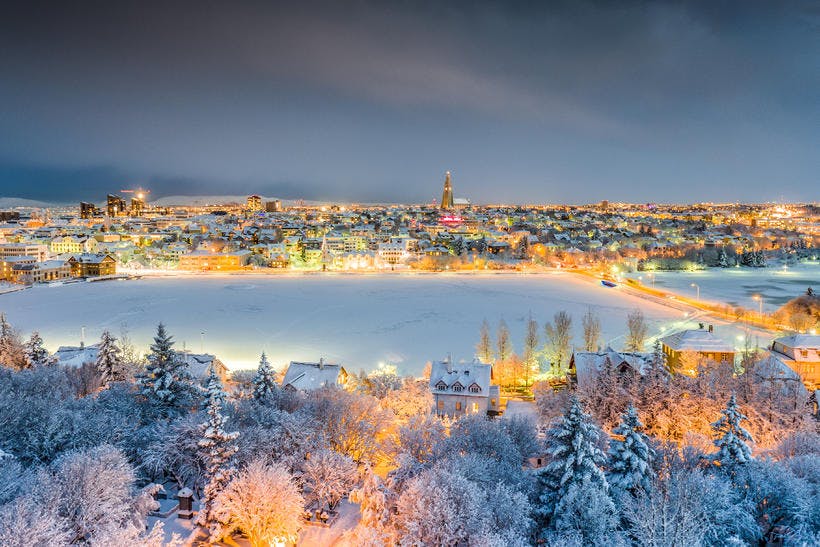
In Reykjavík, we recommend walking through the main street, Laugavegur, on Þorláksmessa, December the 23rd. The street becomes filled with people, there is a warm and friendly atmosphere (if you’re not too stressed out finding the last-minute presents) and you’ll find solo singers, brass bands, charol singers and the likes.
- Get your Travel Voucher to Iceland | Best Christmas Present Ever
- See also: Winter Wonderland of the North | Christmas Tour from Akureyri
In Reykjavík, Akureyri and Ísafjörður, people light candles, sing carols and march for peace at 6 pm in the evening. In Reykjavík, this walk starts at Hlemmur and trails down Laugavegur.
On Þorláksmessa, many Icelanders also uphold the odd and stenchy tradition of eating buried, fermented skate.
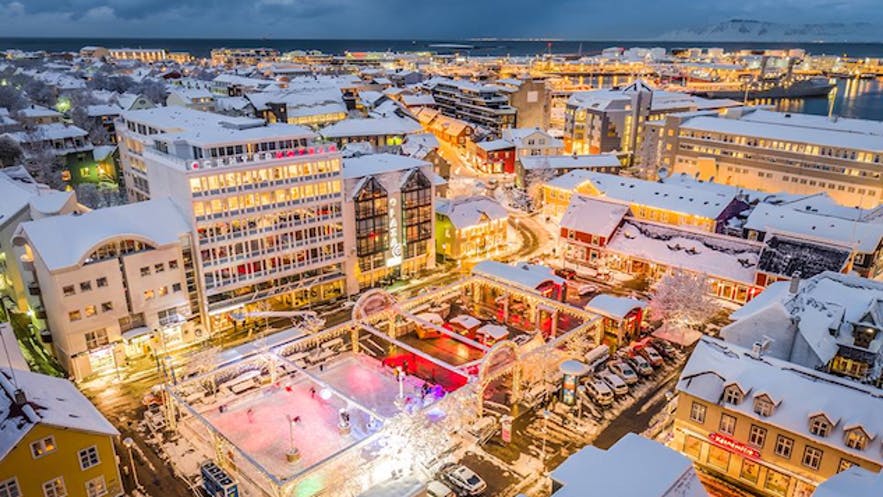
A lot of local folklore is tied in with Christmas, including that of the Yule Cat, who eats children who don’t get nice clothes for the holidays (as if you weren’t bad enough off being poor, you'd also be punished for it!).
Also, we have the troll woman Grýla, who’d eat unruly children. Her own children are the jólasveinar (Yule-lads). Originally, they’d play nasty tricks on farmers, steal their goods and livestock, or wreak general havoc on the farmland.
Today, however, they have been toned down and meshed with Santa Claus (American version). Christmas tricksters, trolls and the like may not be unique for Iceland, but having thirteen (troll) Santas surely must be.
- See also: Christmas in Iceland
- See also: Iceland in December
New Year's Eve in Iceland
On New Year’s Eve Icelanders gather up, first for a family dinner, and then to meet up with friends at about 1 or 2 am to party until the morning.
Around 10 pm, most Icelanders gather 'round the TV set to watch Áramótaskaupið, a satirical comedy show covering highlights of the year (news, politics, etc.)
“What did you think of Skaupið?” is a common discussion topic throughout the night, and it’s seldom assumed that someone didn’t watch it.
At exactly midnight, almost every household in Iceland goes out to light fireworks, so you can see the sky go ablaze like nowhere else in the world.
Bonfires are also lit everywhere, where locals meet up with the families of their neighbourhood to warm their bones before the big night ahead.
Like Christmas, New Year’s Eve has strong connections with folklore. Cows are said to gain human speech, seals take human shape, the dead rise from their graves and Elves move house.
Elven gold is said to be obtainable by sitting through the night at a crossroads, not uttering a word to anyone who passes by. As for the cows, it has been said that those that hear them lose their sanity.
Andre spændende artikler

Island om foråret - Den Ultimative rejseguide
Island er et land med utrolig naturlig skønhed, og foråret er et af de bedste tidspunkter at opleve det. Fra nordlyset til trækfugle er foråret i Island en sæson med fornyelse, hvilket gør det til e...Læs mere
Hvad skal man have på i Island: Den ultimative guide til alle årstider
Island er berygtet for sit omskiftelige vejr med milde vintre og ofte kølige og blæsende somre. At pakke til et land med vejrguder, der er tilbøjelige til at svinge i humør, kan virke skræmmende, men...Læs mereDe 12 bedste aktiviteter i Island
Hvad er de 12 bedste aktiviteter og oplevelser, du ikke bør gå glip af, mens du er på ferie i Island? Hvad er de mest populære turvalg og kulturelle udflugter? Hvad skal du opleve og gøre, hvis du k...Læs mere

Download Islands største rejsemarkedsplads til din telefon for at administrere hele din rejse på ét sted
Scan denne QR-kode med dit telefonkamera, og tryk på det link, der vises, for at lægge Islands største rejsemarkedsplads i lommen. Indtast dit telefonnummer eller din e-mailadresse for at modtage en sms eller en e-mail med downloadlinket.
